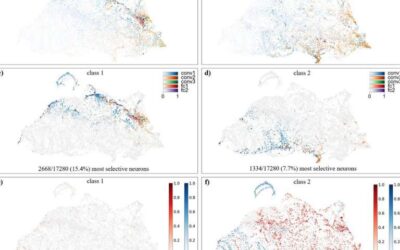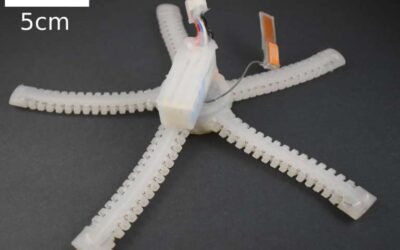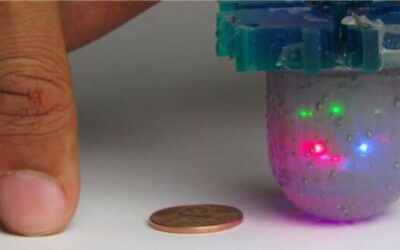Robots could soon assist humans in a variety of fields, including in manufacturing and industrial settings. A robotic system that can automatically assemble customized products may be particularly desirable for manufacturers, as it could significantly decrease the...
Machine learning & AI
Investigating the role of different neurons in artificial neural networks
Over the past decade or so, researchers worldwide have been developing increasingly advanced artificial neural networks (ANNs), computational methods designed to replicate biological mechanisms and functions of the human brain. While some of these networks have...
Bio-inspired algorithms to produce collaborative behaviors for robot teams
Researchers at the University of Surrey have recently developed self-organizing algorithms inspired by biological morphogenesis that can generate formations for multi-robot teams, adapting to the environment they are moving in. Their recent study, featured in IEEE...
This is PATRICK: Meet the brittle star-inspired robot that can crawl underwater
Researchers at Carnegie Mellon University have recently created PATRICK, an untethered soft robot that artificially replicates the structure and behavior of the brittle star, a marine invertebrate closely related to starfish. This unique bio-inspired robot, presented...
Teaching the iCub robot to express basic human emotions
As robots make their way into a variety of environments and start interacting with humans on a regular basis, they should be able to communicate with users as effectively as possible. Over the past decade or so, researchers worldwide have thus been developing machine...
OmniTact: A compact and high-resolution tactile sensor for robotics applications
In recent years, researchers worldwide have been trying to develop sensors that could replicate humans' sense of touch in robots and enhance their manipulation skills. While some of these sensors achieved remarkable results, most existing solutions have small...
A human-like planner that allows robots to reach for objects in cluttered environments
While research in the field of robotics has led to significant advances over the past few years, there are still substantial differences in how humans and robots handle objects. In fact, even the most sophisticated robots developed so far struggle to match the object...
Comparing Western and Chinese classical music using deep learning algorithms
Deep learning techniques are proving to be extremely useful for analyzing all kinds of data, ranging from images to text, online posts and audio recordings. These techniques are designed to identify patterns in large datasets, separate items in different categories...
Measuring Chatbot Performance
Assessing chatbot performance isn’t always as straightforward as evaluating other technological tools, as it often entails trying to understand how a user perceives the agent.
Deep-learning system detects human presence by harvesting RF signals
Researchers at Syracuse University in New York have recently developed a system that can detect the presence of humans in a given environment by analyzing ambient radio frequency (RF) signals. This new system, presented in a paper pre-published on arXiv, employs a...










